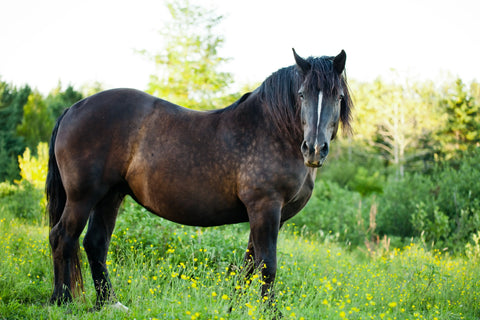
The Different Equestrian Disciplines
of reading - words
There are a multitude of equestrian disciplines carried out both as a simple leisure activity or for competition. This is an asset for this activity because it gives you the opportunity to test several of them and find the one in which you will thrive with your horse. We will present to you some of these disciplines by focusing on the global disciplines recognized by the Fédération Equestre Internationale of which there are 8. 🏇
Horse dressage
The goal of horse dressage is to develop the horse's natural athletic ability and willingness to work, which is supposed to make him calm, supple and attentive to the rider. Learning is done throughdressage exercises.
The competition consists of a sequence of figures, which we call a test, within a career or a dressage square. The judges then rate the quality of execution to determine the ranking of the participants.

The show jumping competition (CSO)
The discipline consists of chaining jumps over obstacles of varying height depending on the difficulty of the competition. The goal is to respect a pre-established order and not to knock down any obstacles on the course while being the fastest!
For the record, the highest show jump in the world is 2m47 and is held by Huaso.
The Complete Horse Riding Competition (CCE)
Evening competition requires physical and sporting rigor from both the horse and the rider. It includes three events: the two disciplines that we have just presented to you (Dressage and CSO) as well as a cross-country event which is carried out in the countryside by linking the phases of galloping and jumping over natural and fixed obstacles such as tree trunks, hurdles or even rivers. The CCE as a whole is the most difficult event because it requires various qualities from the horse, including speed, endurance and remarkable agility.
These first three events are the only ones present in horse riding at the Olympic Games and are therefore very widespread in the different clubs.

The marathon test: riding endurance
Endurance rides focus on covering a long distance of 20 to 160 km with your horse. There are checks carried out approximately every 20 km to ensure the health of the horse and rider. The victory conditions are based on speed of course but also on the condition of the horse, it is not enough to arrive first to achieve victory but to ensure the good physical condition of your horse so as not to push it to the limit.

Horse acrobatics
Equestrian aerobatics is practiced in a closed environment in a circle of 15 meters in diameter maximum. This discipline can be practiced individually or in a team and consists of doing figures on the horse's back using a surfaix.
The horse can perform different gaits from walking to walking, through trotting and then galloping. The scoring criteria are the artistic touch, the technique of execution and the regularity of the horse in its gaits.

The equine team
Driving is characterized by horses which are harnessed to a two-wheeled carriage. There are several categories depending on the number (1, 2 or 4 horses) and the breed (thoroughbred or draft). The event includes up to 3 successive tests which are dressage, marathon and handling.
Before becoming an equestrian sport, carriage was the only means of transport for a long historical period.

The western discipline: Reining
Often described as the Western version of dressage, in reining competitions, riders guide horses through a precise pattern of circles, pirouettes and stops.
All work is done at the lope (a more relaxed version of the canter) or at the canter (the horse's fastest gait). The horse should be controlled with little or no apparent resistance.

Para-equestrian dressage
It is reserved for disabled people and consists of compulsory and free dressage patterns that are more or less complex depending on the riders' degree of disability. It is a recent discipline which was integrated into the Paralympic Games in 1996 and into the World Games since 2010. 🏆
We decided to focus on these horseback disciplines but there are still many others that are practiced as a team, culturally or at a national level in France!









